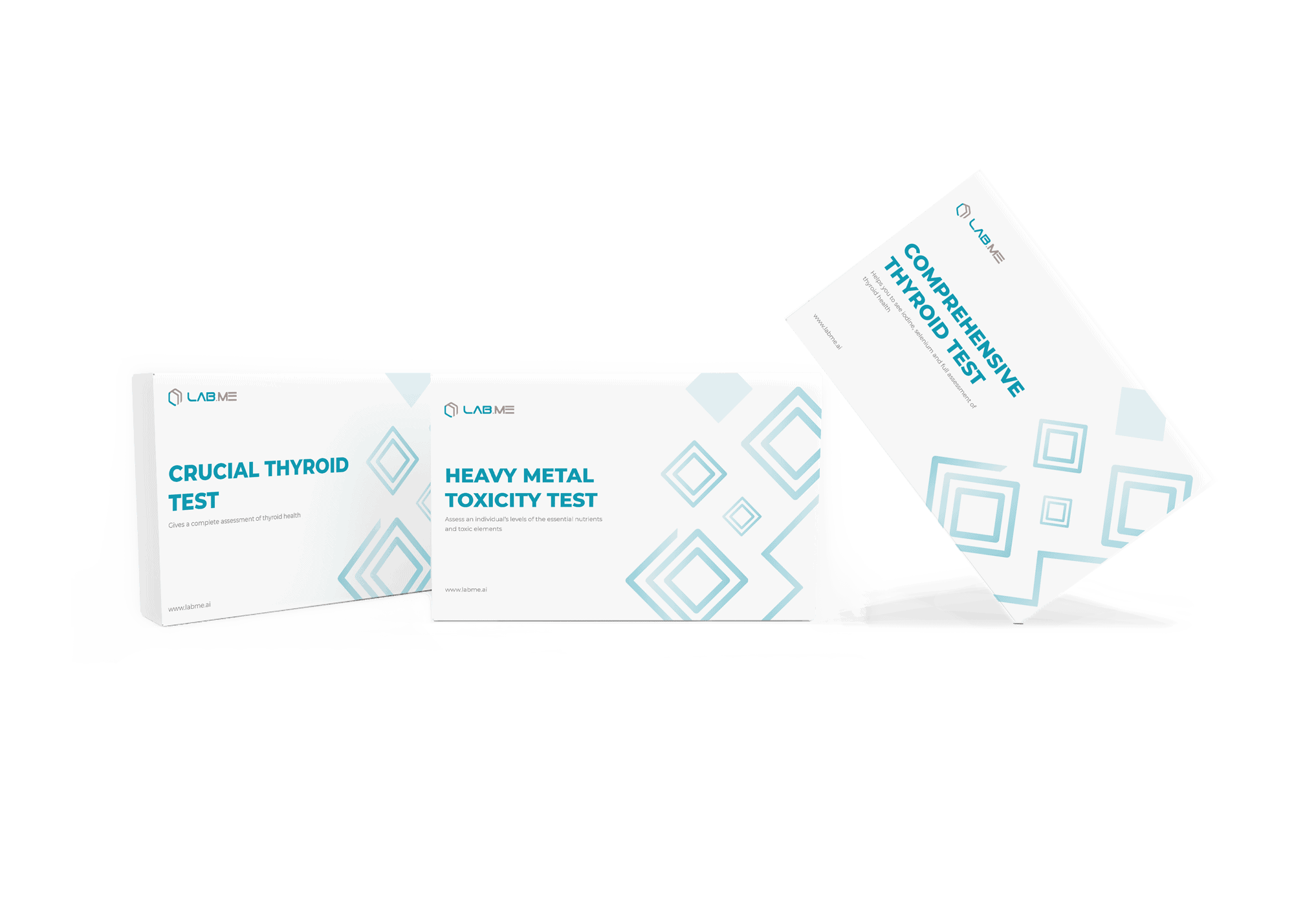
It is not uncommon to see male hormone imbalances these days. Men's bodies have been adversely affected by the changes in their lifestyles, including the types of foods they eat, how they sleep, and how they work. A hormonal imbalance can harm your health if it extends to a high level. There are, however, few people who are concerned about their health and undergo regular hormone tests.
Most people have difficulty going to a lab, giving a sample, and waiting for the results. They may find it stressful. This issue has been resolved by hormone testing at home offered by different companies. You can now check your hormonal levels at home without needing an appointment with a doctor.
A man can check his hormone levels at home by performing various tests. There is nothing complicated about these tests. Different companies offer different tests for checking male hormonal levels. Let’s compare the three popular male hormone tests at home and conclude which is better.
These three male hormone tests at home include
- Men’s Health Test by EverlyWell
- Male Hormone Test by LetsGetChecked
- Crucial At-Home Male Hormones Test by Lab Me
We will analyze each test in detail to determine the best hormone test for you based on their differences.
- Men’s Health Test By EverlyWell
Men’s Health Test at home by EverlyWell provides detailed information on the four hormones. It measures whether their level is low, high, or normal. A man can estimate his body’s changes due to hormonal imbalance by checking the level of these four main hormones.
All you have to do is take the test at home and send your sample to the lab. After the lab receives your sample, you will receive your results within a few days.
What are the findings of the Test?
Using this at-home lab test, you can measure four key hormones in the male body. These hormones mainly affect mood, body weight, sex drive, body mass, and energy level.
Using the Men’s Health Test by EverlyWell, you can check the level of the following hormones:
- Cortisol
- DHEA or dehydroepiandrosterone
- Estradiol
- Free testosterone
- Cortisol
is a stress hormone produced by adrenal glands in sufficient amounts in fight-or-flight conditions? Fluctuation in cortisol levels can change the men’s response to challenging situations.
- DHEA
A hormone produced by the adrenal glands, DHEA is an androgen hormone. This hormone is the precursor to testosterone and estrogen in the body. Changes in DHEA can alter testosterone and estrogen production in males.
- Estradiol
is a type of estrogen found in both sexes. The level of estradiol in men increases naturally with age. Furthermore, estrogen helps maintain bone strength, brain functioning, and male fertility by maintaining testicular fluid balance.
- Free Testosterone
means there is no sort of protein attached to testosterone.
Testosterone in its complete form, includes both free and protein-bound testosterone. It is responsible for the production of male primary as well as secondary characteristics.
Related Symptoms
If you are experiencing any of the below-mentioned symptoms, then you should go for this test:
- Lethargy
- Fatigue or feeling tired
- Muscular mass
- Pain in the joints
- Weakness
- Obesity
- Body mass fluctuation
- Decreased muscle mass
- Insomnia or improper sleep
- Lack of libido
- Erectile dysfunction
- Male Hormone Test By LetsGetChecked
LetsGetChecked's Men's Health Test at home provides detailed information on the two hormones. This test measures whether their levels are low, high, or normal. Using these two hormones, a man can estimate how hormonal imbalance affects his body.
You just need to collect your sample in the morning and send it to the lab with a pre-paid shipping label. It may take two to five days for your results to appear in your online account.
What are the findings of the Test?
There has been a decrease in testosterone levels in males over the past 40 years. Since it is the primary male hormone, keeping a close eye on it is crucial. Male Hormone Test By LetsGetChecked can help you find these two hormones:
- Testosterone
- Sex Hormone Binding Globulin (SHBG).
By knowing the level of these hormones, you will also be able to find the free androgen index (FAI).
- Testosterone
It’s the primary male sex hormone, as discussed above.
- Sex Hormone Binding Globulin (SHBG)
does the liver make the protein. The SHBG test is particularly for measuring testosterone levels in the blood. Fluctuation in this protein indicates changes in the male's body's level of other sex hormones.
- Free Androgen Index (FAI)
is the ratio of testosterone and SHBG. This will help in the determination of free testosterone available in the blood.
Related Symptoms
You should undergo this test if you are experiencing any of the following symptoms:
- Lethargy
- Erectile dysfunction
- Anxiety
- Lack of libido
- Depression
- Enlarged breast
- Infertility
- Weak bones
- Hypopituitarism or reduced hormones production by the hypothalamus
- Continuous headache
- Blurred vision
Others Who Can also take this Test
You should also undergo this test if facing any of the following conditions:
- Undergoing chemotherapy
- Having type 1 and type 2 diabetes
- Suffering from Klinefelter syndrome
- Suffering from hemochromatosis
- Hypothyroidism or hyperthyroidism
- Having a kidney or liver disease
- Suffering from obesity
- Taking anabolic steroids
- Having anorexia nervosa
- Having a family member suffering from low testosterone level
- Crucial At-Home Male Hormones Test By Lab Me
The crucial at-home male hormones test by LabMe is designed to assess hormonal imbalances in men. This test measures the levels of Estradiol, Progesterone, Testosterone, Sulfate, and Cortisol in the body.
This male hormone test is ideal for
- Baselining hormone replacement therapy
- Monitoring hormone levels.
You have to submit your sample to the lab. Then, your results are reviewed by a licensed physician, along with suggestions for improvement. There is also an opportunity for inquiries to the medical team without any charges.
What are the findings of the Test?
You can measure the level of 5 main hormones in the male body from a crucial at-home male hormones test. These hormones include
- Estradiol
- Progesterone
- Testosterone
- DHEA Sulfate
- Cortisol x 4 ( Four measurements ) Crucial
- Estradiol
As discussed above.
- Progesterone
It is primarily a female hormone. In males, it is produced by the testes and adrenal glands and is responsible for testosterone production.
- Testosterone
As discussed above,
- DHEA
As discussed above,
- Cortisol
As discussed above,
Related Symptoms
If you are suffering from the below-mentioned symptoms, you should undergo a crucial at-home male hormone test:
- Low Libido
- Irritability
- Depression or anxiety
- Muscle loss and weakness
- Erectile Dysfunction
- Sleep Disturbances or insomnia
- Cardiovascular Profiles Changing Negatively
Find out the Best Male Hormone Test
Let’s compare the male hormone test at home offered by three organizations and find the best one.
| Male Hormone Test At Home | Collection Method | Price | Core Findings |
| By EverlyWell | Saliva | $186.75(one-time purchase )$211( Semi-Annual Subscription) | Measure the level of 4 main male hormones, including testosterone, estradiol, cortisol, and DHEA. |
| By LetsGetChecked | Finger prick | $139(one-time purchase )$97.30(Subscribed and saved, repeat every three months) | Measure testosterone level and SHBG. |
| Crucial At-Home Male Hormones by LabME | Saliva | $179(one-time purchase ). | It measures estradiol, Progesterone, testosterone, DHEA Sulfate and cortisol levels. |
Among all three male hormone tests at home, LabMe offers the most accurate results at an affordable price. Let’s find out how LabMe is a perfect option for testing male hormone levels at home.
Specific Features of the LabMe At-Home Health Testing
A well-trusted organization, LabMe, can help you maintain a healthy lifestyle by keeping a check on your hormones.
LabMe offers some specific features for patient trust and facilities that are unavailable elsewhere. These features include
- Results Reviewed By Experts
- USA Licensed Physician Reviews
- Messaging Asynchronous
- Quick Testing At Home
- Affordable And Accurate Tests.
Results Reviewed By Experts
Licensed US physicians to work at LabMe are experts in checking the reports of your hormonal tests. An authentic report is prepared after these experts critically review all fluctuations and abnormalities in hormonal levels.
USA Licensed Physician Reviews
The experts make recommendations after the critical analysis of your results. It is all for your better recovery and improved living conditions.
Messaging Asynchronously
LabMe's medical team can answer any questions you have. You can sort out your confusion without hesitation because the team will respond within 24 hours.
Quick Testing At Home
All you need to do is collect the sample and send it to the lab. Then, just wait for a few days to get your result back.
Affordable And Accurate Tests
LabMe offers you accurate tests in an affordable range. In the range, you will not have to worry about compromising your health for cost.

Final Words
Crucial At-Home Male Hormones Test by LabMe is the best option you can ever choose for measuring your hormonal level at home. Providing accurate and authentic results at an affordable price, LabMe is a medical team you can trust. Contacting LabMe also allows you to get expert recommendations and direct communication with the medical team.






















